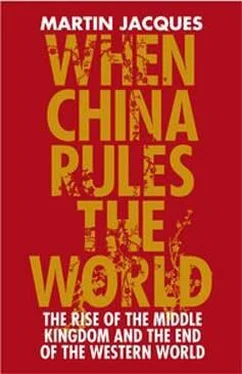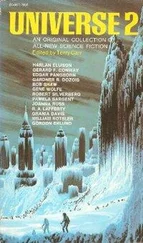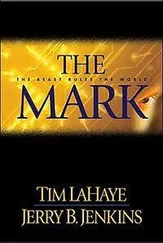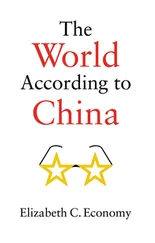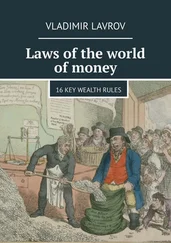Japan was the only Asian country to begin industrialization in the nineteenth century, the only intruder in an otherwise exclusively Western club. By any standards, it was phenomenally successful in its attempt to emulate the West, industrializing rapidly prior to 1914, and then again before 1939; it colonized a large part of East Asia by 1945, and then overtook much of the West in GDP per head by the 1980s. Not surprisingly, Japan served as an influential economic model when the East Asian tigers began their economic take-off from the late 1950s. If we want to understand the nature of Asian modernity, Japan is the best place to start because it was first and because it remains easily the most developed example. Just because Japan is part of East Asia, however, does not mean that it is representative of the region: on the contrary, Japan is, as we shall see, in important respects unique.
WHERE DOES JAPAN COME FROM?
Japan has been shaped by two momentous engagements with the most advanced civilizations of their time: China in the fifth and sixth centuries and the West in the nineteenth and twentieth centuries. Japan ’s early history was influenced by its proximity to China, which was a far more advanced and sophisticated country. Prior to its engagement with China, Japan had no writing system of its own, but subsequently adopted and Japanized many Chinese characters and blended them with its own invented writing system. This was an extremely difficult process because the two languages were completely different and unrelated. In the process, the Chinese literary tradition became one of the foundation stones of Japanese culture. Taoism, Buddhism and Confucianism entered Japan from China via Korea more or less simultaneously around the sixth century. [127] [127] Michio Morishima, Why Has Japan ‘Succeeded’: Western Technology and the Japanese Ethos (Cambridge: Cambridge University Press, 1984), p. 20.
Taoism melded with Japanese animist traditions and mutated into Shintoism, while Confucianism became, as in China, the dominant intellectual influence, especially amongst the elite, and even today, in its Japanese form, still dominates the ideology of governance. [128] [128] The first constitution, adopted in AD 604, for example, was an overwhelmingly Confucian document; ibid., p. 26.
Confucianism was one of the most sophisticated philosophies of its time, a complex system of moral, social, political and quasi-religious thought, its greatest achievement perhaps being to widen access to education and culture, which previously had been confined to the aristocracy. The Chinese influence was to continue for many centuries, only finally being displaced by that of the West with the Meiji Restoration in 1868. Japan, thus, lived in the shadow of China for some fourteen centuries, for most of that time as one of its tributary states, paying tribute to the Chinese emperor and acknowledging the superiority of Chinese civilization. This left a deep imprint on the Japanese psyche and nurtured an underlying sense of inferiority together with a defensive, and incipiently militant, nationalism. [129] [129] Ibid., pp. 10, 34.
Though Chinese influence was profound, it was refracted through and shaped by Japan’s own experience and traditions. Japanese Confucianism differed markedly in various respects from Chinese Confucianism. While the latter explicitly included benevolence amongst its core values, the Japanese instead laid much greater emphasis on loyalty, a difference that was to become more pronounced with the passage of time. Loyalty, together with filial piety and a duty to one’s seniors — based on authority, blood and age — were amongst the key defining characteristics of the hierarchical relationships that informed Japanese culture. [130] [130] Ibid., pp. 35-6, 7.
China and Japan were both ruled by an imperial family; there were, however, two crucial differences between them. First, in China a dynasty could be removed and the mandate of heaven withdrawn: there have been thirty-six dynasties in Chinese history. In contrast, the Japanese imperial family was regarded as sacred: the same family has occupied the imperial seat throughout its 1,700-year recorded history. Second, while a Chinese dynasty enjoyed absolute power, the Japanese imperial family did not. For only a third of its history has the Japanese imperial family ruled in both name and reality. For much of Japan’s history, there has been dual or even triple government, with the emperor, in practice at least, obliged to share power. [131] [131] Ibid., pp. 9, 32, 34.
The most typical form was dual government, with political power effectively controlled either by shoguns (the military chiefs), or by prime ministers or chief advisors backed by military power. The price of eternity, in other words, has been a greatly diminished political role. During the Tokugawa era (1603–1867), real political power was exercised by the military in the person of the shogun. The emperor enjoyed little more than symbolic and ceremonial significance, although formally the shogun remained answerable to him. Ruth Benedict, in her classic study of Japan, The Chrysanthemum and the Sword , makes the interesting observation that ‘Japan’s conception of her Emperor is one that is found over and over among the islands of the Pacific. He is the Sacred Chief who may or may not take part in administration. In some Pacific Islands he did and in some he delegated his authority. But always his person was sacred.’ [132] [132] Ruth Benedict, The Chrysanthemum and the Sword: Patterns of Japanese Culture (London: Secker and Warburg, 1947), pp. 68-9.
To understand Japan we need to see it in its Pacific as well as East Asian context.
The Tokugawa era, the 250-year period prior to the Meiji Restoration, saw the creation of a highly centralized and formalized feudal system. [133] [133] David S. Landes, The Wealth and Poverty of Nations (London: Little, Brown, 1998), Chapter 22.
Beneath the imperial family and the lords ( daimyo ), society was organized into four levels in such strict hierarchy that it possessed a caste-like quality: these were the warriors ( samurai ), the farmers, the artisans and the merchants respectively. One should also, strictly speaking, include the burakumin , Japan’s outcasts or untouchables — descended from those who worked in occupations associated with death, such as undertakers, buriers of the executed, skinners of dead animals — who were regarded and treated as invisible, just as they still are today, the exception (along with those of Chinese and Korean ancestry) to the social inclusivity described earlier. [134] [134] Benedict, The Chrysanthemum and the Sword , p. 61; Karel van Wolferen, The Enigma of Japanese Power: People and Politics in a Stateless Nation (New York: Vintage, 1990), p. 74.
One’s rank was determined by inheritance and set in stone. The head of every family was required to post on his doorway his class position and the details of his hereditary status. His birthright determined the clothes he could wear, the foods he could buy and the type of house he could live in. The daimyo took a portion of his farmers’ rice every year and out of that, apart from catering for his own needs, he paid his samurai . The samurai possessed no land: their formal function was to defend the daimyo , his land and property. They were the only members of society allowed to carry a sword and enjoyed wide and arbitrary power over the lower classes. During the Tokugawa era the daimyo were answerable to the shogun, who, in turn, was, at least formally, accountable to the emperor in his seclusion in Kyoto. Unlike Chinese Confucianism, which valued educational excellence above all (the mandarins being products of a highly competitive examination system), the Japanese, in giving pre-eminence to the samurai , and indeed the shogunate, extolled martial qualities. [135] [135] Morishima, Why Has Japan ‘Succeeded’ , pp. 14–15, 45; Benedict, The Chrysanthemum and the Sword , pp. 61-4.
During the Tokugawa period, China was, in effect, a civilian Confucian country and Japan a military Confucian country.
Читать дальше
